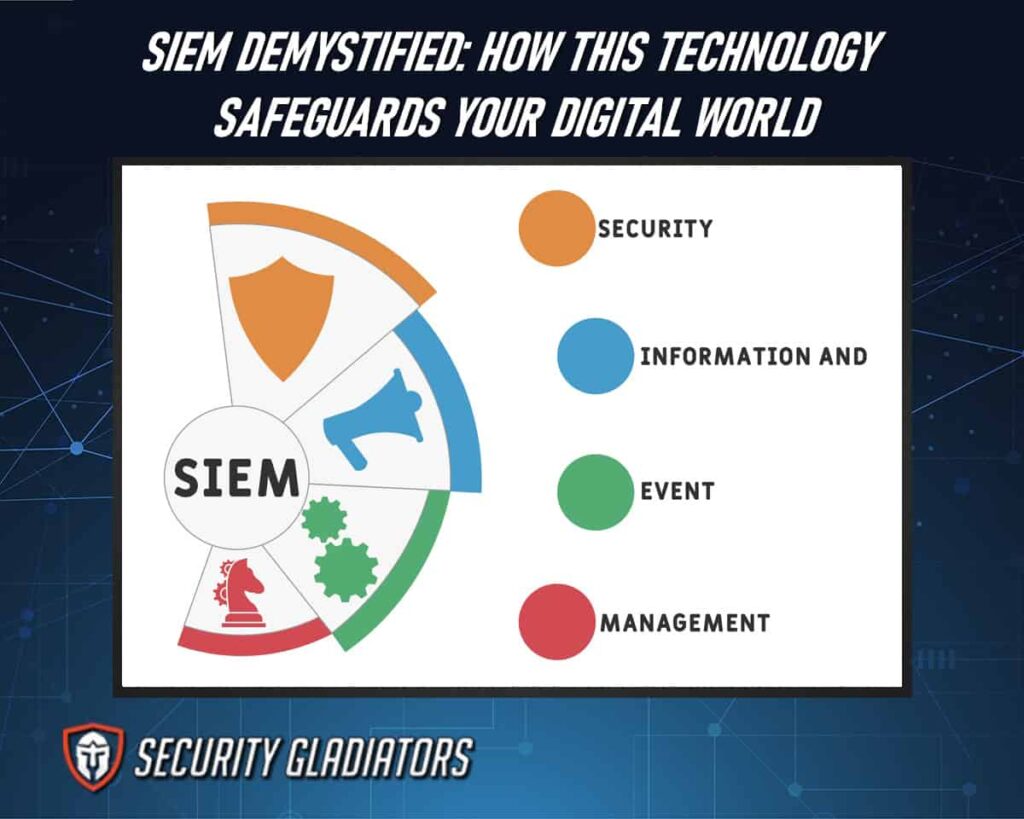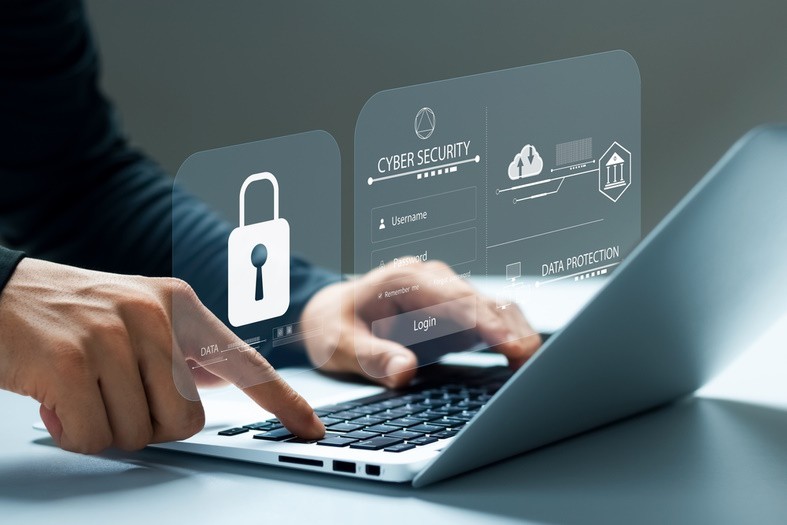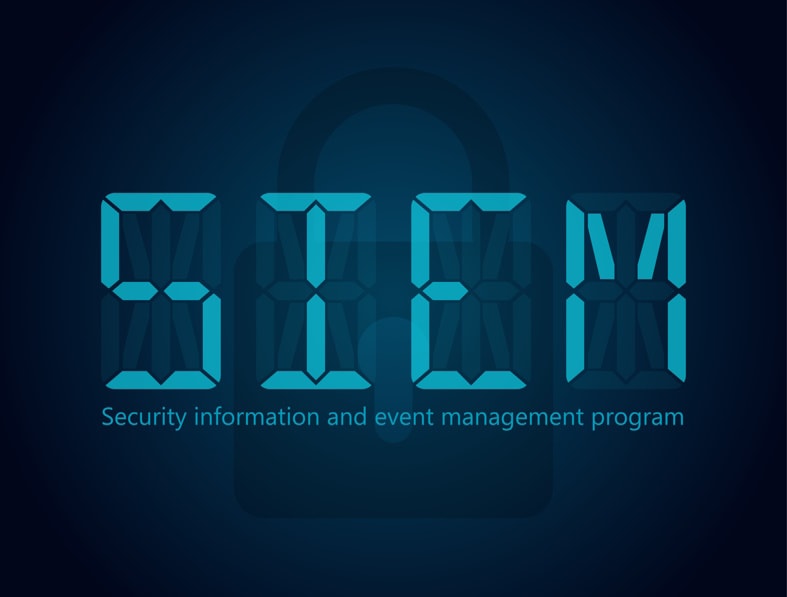
The significance of SIEM cannot be overstated in today’s digital era where cyber attacks are becoming increasingly sophisticated. With its ability to centralize logs and monitor events across multiple platforms, SIEM offers unparalleled visibility into an organization’s infrastructure. It not only detects known threats but also employs machine learning algorithms to identify new patterns or anomalies that may indicate a breach. By leveraging this technology, you can take proactive measures to mitigate risks before they escalate into full-blown security incidents.
Table of Contents
What Is SIEM?
SIEM stands for Security Information and Event Management. It is a comprehensive approach to managing an organization’s security by collecting, correlating, and analyzing security-related data from various sources such as network devices, servers, applications, and more. SIEM systems provide real-time monitoring, threat detection, incident response, and compliance reporting, helping organizations identify and mitigate potential cybersecurity threats and incidents.
How Does SIEM Work?
SIEM works by aggregating and normalizing data from diverse sources like network devices, servers, endpoints, and applications, creating a centralized repository for security events. This data is then subjected to correlation and analysis, where patterns, anomalies, and potential threats are identified through predefined rules or machine learning algorithms. Once threats or suspicious activities are detected, SIEM systems generate alerts or notifications for security personnel to investigate further. Additionally, SIEM facilitates incident response by providing context around incidents, aiding in understanding the scope and impact of security events. Compliance reporting is another crucial aspect, enabling organizations to meet regulatory requirements by generating reports based on stored security data.
What Is the Importance of SIEM?
The importance of SIEM lies in its ability to enhance an organization’s cybersecurity posture and operational efficiency. SIEM systems play a crucial role in:

Threat Detection and Prevention
SIEM monitors and analyzes security data in real-time, enabling the early detection of potential cyber threats and attacks. By correlating events across various sources, SIEM can identify complex attack patterns that might go unnoticed by individual security tools, helping organizations prevent or mitigate security breaches.
Incident Response
SIEM provides a centralized platform for managing and responding to security incidents. It enables security teams to rapidly investigate and understand the scope of an incident, facilitating quicker decision-making and effective containment measures to minimize damage.
Compliance and Regulations
Many industries are subject to regulatory requirements regarding data protection and cybersecurity. SIEM assists organizations in meeting these compliance standards by providing comprehensive logs and reports that demonstrate adherence to security practices and regulatory mandates.
Operational Efficiency
SIEM streamlines the process of data collection, aggregation, and analysis, reducing the time and effort required to monitor and respond to security events. It enables security teams to focus on high-priority tasks rather than sifting through scattered data sources.
Visibility and Context
SIEM provides a holistic view of an organization’s security landscape by collecting data from various sources. This comprehensive visibility offers context around security incidents, enabling a better understanding of attack vectors, potential impacts, and effective remediation strategies.
Threat Intelligence Integration
SIEM systems can integrate external threat intelligence feeds, enriching the analysis with up-to-date information about emerging threats and vulnerabilities, thereby enhancing the accuracy of threat detection.
Forensic Analysis
In the aftermath of a security incident, SIEM logs and data can be invaluable for conducting forensic investigations. They help in reconstructing the sequence of events and identifying the root causes of the incident.
What Are the Limitations of SIEM
SIEM systems offer significant benefits, but they also have some limitations:
Complex Implementation and Maintenance
SIEM deployment can be complex and resource-intensive. Initial setup requires configuring data sources, defining correlation rules, and tuning the system for optimal performance. Ongoing maintenance involves updating rules, adding new data sources, and ensuring the system’s scalability.
Alert Fatigue
SIEMs generate a high volume of alerts, and many of these alerts may be false positives or low-priority events. This can lead to alert fatigue, where security teams become overwhelmed by the sheer number of notifications, causing them to potentially overlook critical alerts.
Skill and Training
Effective use of SIEM systems requires skilled personnel who understand cybersecurity, incident response, and the intricacies of the SIEM platform itself. Hiring and training such experts can be costly and time-consuming for organizations.
Limited Context
While SIEMs provide aggregated data from various sources, they might lack certain contextual details that are crucial for accurate threat assessment. Understanding the business context and potential impact of a security event can be challenging.
Advanced Threats
Some sophisticated cyber attacks can bypass traditional signature-based detection methods and evade SIEM systems’ rules, leading to the potential for undetected breaches. Zero-day vulnerabilities and advanced persistent threats are examples of challenges that SIEMs may struggle to address effectively.
Data Quality and Integration
SIEM effectiveness relies on accurate and consistent data from various sources. Poor data quality, incomplete logs, or challenges in integrating data from different platforms can hinder the accuracy of threat detection and analysis.
Scalability
As an organization grows or deals with increasing amounts of data, the scalability of SIEM systems becomes a concern. Ensuring that the SIEM can handle higher data volumes and still provide timely analysis can be a technical challenge.
Privacy and Compliance
Collecting and storing large amounts of security data can raise privacy concerns, particularly in regions with strict data protection regulations. Organizations need to carefully balance security needs with compliance requirements.
Cost
SIEM solutions can be expensive to implement and maintain, considering the initial licensing fees, hardware requirements, ongoing operational costs, and the need for skilled personnel.
What Are SIEM Features?
Some common SIEM features include:

Log Collection and Aggregation
SIEM systems can collect log data from various sources across an organization’s network, including network devices, servers, applications, and endpoints. This aggregation provides a centralized repository for security-related information.
Real-Time Monitoring
SIEM monitors incoming logs and events in real-time, allowing it to detect and respond to security incidents as they occur.
Event Correlation
SIEM systems analyze and correlate data from multiple sources to identify patterns, anomalies, and potential security threats. Correlation helps in distinguishing between normal and potentially malicious activities.
Alert Generation
When an SIEM detects suspicious or potentially harmful activities, it generates alerts or notifications to inform security personnel. Alerts can be based on predefined rules or machine learning algorithms.
Dashboard and Reporting
SIEM systems often include customizable dashboards and reporting features. These allow security personnel to visualize security data, track key performance indicators, and generate compliance reports.
User and Entity Behavior Analytics (UEBA)
Some SIEM solutions incorporate UEBA capabilities to monitor user and entity behaviors and identify deviations from established baselines, helping to detect insider threats or compromised accounts.
Forensic Analysis
SIEM logs provide valuable data for post-incident analysis. Security teams can use these logs to reconstruct events, understand attack timelines, and identify the root causes of security breaches.
Integration with Threat Intelligence
SIEM systems can be integrated with external threat intelligence feeds to enhance threat detection accuracy by incorporating up-to-date information about known threats and vulnerabilities.
What Are the SIEM software or Tools?
Here are some well-known SIEM software and tools that are commonly used by organizations to enhance their security posture:
Splunk
Splunk offers a comprehensive platform for log management, security information, and event management. It provides real-time monitoring, advanced analytics, customizable dashboards, and extensive integration capabilities.
IBM QRadar
IBM QRadar is a robust SIEM solution that offers security monitoring, threat detection, incident response, and compliance management. It employs advanced analytics, and behavior analysis, and supports a wide range of data sources.
Exabeam
Exabeam is a leading SIEM tool that helps organizations detect, investigate, and respond to cybersecurity threats effectively. It employs advanced analytics and machine learning to provide comprehensive threat detection and behavioral analysis, helping security teams identify suspicious activities and prioritize threats. Exabeam’s user-friendly interface and automation capabilities streamline security operations, enhancing an organization’s overall security posture.
LogRhythm
LogRhythm provides a holistic SIEM platform that includes log management, threat detection, and response capabilities. It offers features like AI-driven security analytics, UEBA, and automation.
AlienVault USM (Now Part of AT&T Cybersecurity)
AlienVault Unified Security Management combines SIEM, intrusion detection, asset discovery, vulnerability assessment, and threat intelligence in a single platform.
McAfee Enterprise Security Manager (ESM)
McAfee ESM offers real-time visibility, correlation, and analysis of security events. It integrates with McAfee’s broader security ecosystem.
SolarWinds Security Event Manager
SolarWinds SEM provides log management, real-time event correlation, threat detection, and compliance reporting. It is known for its user-friendly interface.
RSA NetWitness Platform
RSA NetWitness offers an SIEM solution with advanced threat detection and response capabilities. It focuses on using behavioral analytics to identify complex threats.
How To Choose the Right SIEM Product
Here are steps to help you make an informed choice:
Assess Your Needs
Understand your organization’s specific requirements and objectives. Consider factors such as the size of your network, the volume of data you need to process, compliance requirements, and the types of threats you’re most concerned about.
Define Use Cases
Identify the primary use cases for the SIEM system. Are you focusing on threat detection, compliance reporting, incident response, or a combination of these? Different SIEM solutions may excel in different areas.
Evaluate Features
Compare the features offered by different SIEM products. Look for capabilities that align with your needs, such as real-time monitoring, advanced analytics, correlation rules, threat intelligence integration, and user behavior analytics.
Scalability
Consider whether the SIEM solution can handle your organization’s current data volume and scale as your needs grow. Ensure that the solution can accommodate additional data sources and users.
Integration
Evaluate how well the SIEM can integrate with your existing security infrastructure, including firewalls, endpoint protection, intrusion detection systems, and threat intelligence feeds.
Ease of Use
User-friendliness is important. A complex SIEM tool might require a steep learning curve and more expertise to operate effectively. Consider the interface, customization options, and the availability of training resources.
How To Implement SIEM Best Practices
Below is how you can implement SIEM best practices effectively:
- Define clear objectives
- Involve stakeholders
- Select critical data sources
- Normalize collected data
- Create effective correlation rules
- Continuously tune rules
- Implement automated responses
- Integrate threat intelligence
- Use User and Entity Behavior Analytics (UEBA)
- Develop security playbooks
- Conduct regular reviews
- Provide user training
- Ensure continuous monitoring
What Is the Future of SIEM
The future of security management lies in leveraging advanced analytics and automation to proactively detect and respond to evolving threats. Security analysts can’t rely solely on manual investigation and rule-based detection methods anymore. Instead, they need to embrace entity behavior analytics and the power of machine learning algorithms to quickly identify anomalies and potential security incidents.
Note:
By harnessing advanced analytics, organizations can gain deeper insights into their data. This enables them to detect patterns and trends that may indicate malicious activity. This proactive approach allows security workflows to be optimized, with automated responses triggered when certain thresholds or criteria are met.Frequently Asked Questions
Are There Any Alternatives to SIEM Technology for Safeguarding the Digital World?
Yes, there are alternatives to traditional SIEM technology for enhancing digital security. One approach is Security Orchestration, Automation, and Response (SOAR) platforms, which streamline incident response through automation and coordination. Additionally, Endpoint Detection and Response (EDR) solutions focus on monitoring and responding to threats at the endpoint level, offering advanced threat-hunting and investigation capabilities. Lastly, User and Entity Behavior Analytics (UEBA) tools analyze patterns of user and entity behavior to detect anomalous activities, complementing traditional SIEM approaches.
What Are the Typical Costs Associated With Implementing a SIEM Solution?
Implementing an SIEM solution can vary in cost depending on factors like the size of your organization and the level of customization needed. Expenses may include software licenses, hardware, implementation fees, training, and ongoing maintenance.
Can SIEM Be Used for Compliance With Specific Regulations, Such as GDPR or HIPAA?
Yes, SIEM can be used for compliance with specific regulations like GDPR or HIPAA. It helps organizations monitor and protect sensitive data, detect breaches, and generate reports required to demonstrate adherence to regulatory requirements.
Conclusion
SIEM is not just a technology but a necessary tool for protecting our digital world. Its importance cannot be underestimated as cyber threats continue to grow in complexity and frequency. By leveraging the capabilities offered by SIEM solutions and implementing best practices, organizations can better defend against potential attacks and safeguard their valuable data assets. As we move forward into an increasingly interconnected world, the future of SIEM looks promising as it continues to adapt and evolve alongside emerging technologies.

